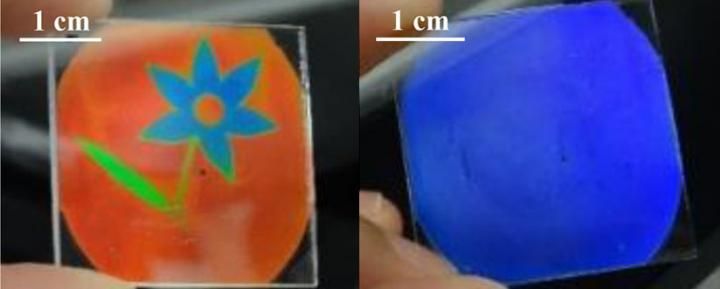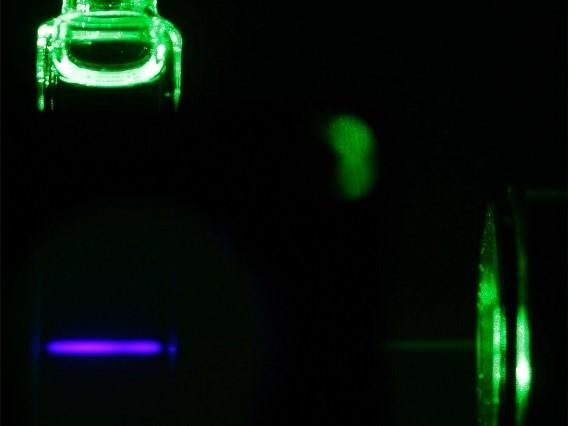Printable, colorful camouflage with polymers
Advertisement
In nature, colors can serve as a form of communication, but they can also hide animals and plants, camouflaging them from sight. Researchers now report that they have developed polymers that can better mimic nature's color-changing abilities than existing polymers. They say the materials could enable smart decorations, camouflage textiles and improved anti-counterfeiting measures.

Newly developed polymer can better mimic nature's color-changing abilities.
American Chemical Society
Most of the colors that people are familiar with, such as hues on a piece of paper, are made with pigments. But another type, called structural color, exists, in which the color is produced by periodically arranged microscopic structures that interfere with visible light. For example, peacock tail feathers are actually brown, but microscopic structures present in the feathers make them look blue and green to the naked eye. Scientists have used cholesteric liquid-crystalline (CLC) polymers to mimic the structural coloration found in nature because they can easily be made into responsive materials. But so far, researchers have only produced them in a limited range of colors. So Albertus P. H. J. Schenning and Monali Moirangthem wanted to make CLC polymers with the full visible spectrum of colors.
The team used inkjet printing technology and a calcium nitrate solution to print an image on a CLC polymer they developed. Printing successive layers changed the degree of swelling of the CLC polymer, changing the color. One layer resulted in an orange color, a second layer changed it to green, and a third layer made it blue. As an example, the researchers used the method to draw a blue flower with green leaves on a reddish-orange background. After the ink dried, the image was no longer visible--the entire surface appeared blue. However, sprinkling water or breathing on it caused the full color image to re-appear.
Original publication
Most read news
Original publication
Monali Moirangthem and Albertus P. H. J. Schenning; "Full Color Camouflage in a Printable Photonic Blue-Colored Polymer"; ACS Applied Materials & Interfaces; 2018
Topics
Organizations
Other news from the department science

Get the chemical industry in your inbox
By submitting this form you agree that LUMITOS AG will send you the newsletter(s) selected above by email. Your data will not be passed on to third parties. Your data will be stored and processed in accordance with our data protection regulations. LUMITOS may contact you by email for the purpose of advertising or market and opinion surveys. You can revoke your consent at any time without giving reasons to LUMITOS AG, Ernst-Augustin-Str. 2, 12489 Berlin, Germany or by e-mail at revoke@lumitos.com with effect for the future. In addition, each email contains a link to unsubscribe from the corresponding newsletter.

































































